7 Persian Tattoo Ideas
Persian culture has always been a wellspring of deep meaning, intricate design, and rich storytelling. From the lyrical elegance of Farsi calligraphy to the detailed artistry of ancient miniatures, Iran’s visual and poetic traditions offer powerful inspiration for tattoo design. For those who want their body art to reflect identity, ancestry, or aesthetic beauty, Persian tattoos create a perfect fusion of heritage and expression.
Rooted in thousands of years of historfrom the grandeur of the Persian Empire to modern expressions of resistance and creativity these tattoos hold layered symbolism. Whether you are of Persian descent or simply drawn to its unmistakable artistic style, these seven tattoo ideas represent the cultural depth, poetic soul, and visual richness of one of the world’s most influential civilizations. Each design offers not only visual appeal but also a deep emotional and intellectual connection to the stories and symbols that have shaped Persian heritage.
1. Intricate Persian Carpet Patterns
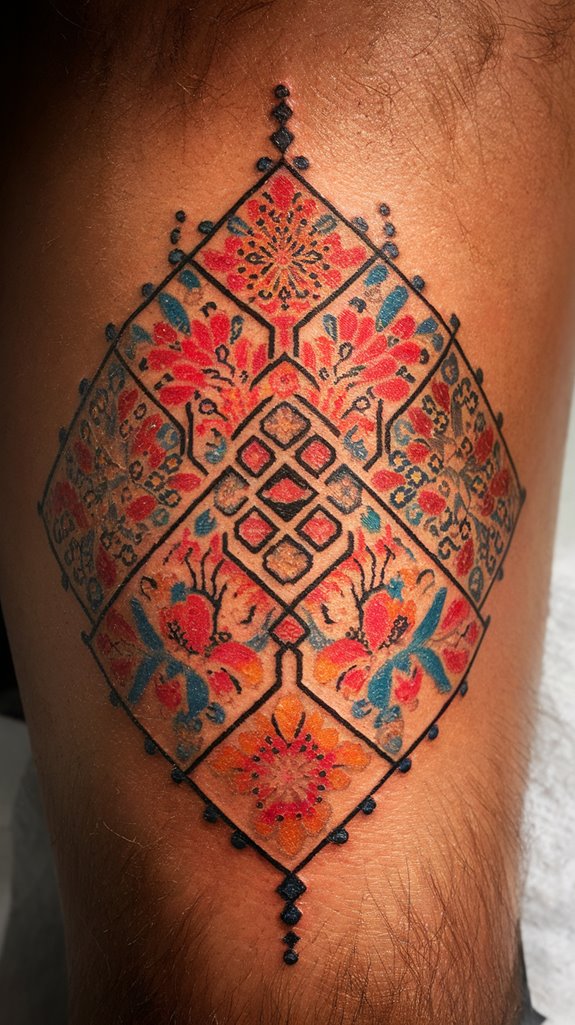
Persian carpets are renowned for their craftsmanship, color richness, and storytelling. More than just decorative pieces, each carpet pattern is like a woven poem, blending geometry, symbolism, and narrative. As tattoos, these patterns can be reimagined as repeating motifs across arms, shoulders, back, or even as full sleeve designs. Using symmetrical borders, floral medallions, and traditional motifs like boteh (paisley) and garden layouts, a Persian carpet tattoo weaves beauty into every line.
One can incorporate personal elements within the carpet framework such as a family symbol, a specific flower, or a stylized name. Artists can use either bold outlines for a traditional flash tattoo aesthetic or soft gradient shading for a more modern effect. This style appeals to those who value meticulous detail, historical continuity, and a design that resonates with both luxury and meaning.
2. Elegant Persian Calligraphy Quotes
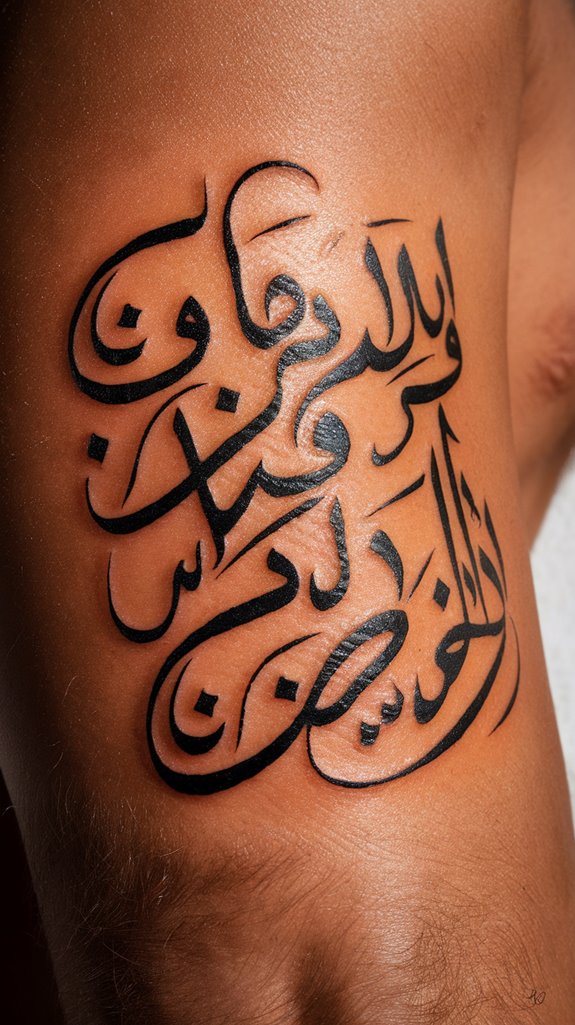
There is nothing quite as graceful or soul-stirring as Persian calligraphy. The flowing Farsi script has a natural elegance that lends itself beautifully to tattoos. Whether the text is from ancient poets like Hafez, Rumi, Khayyam, or from contemporary Persian writers, calligraphy tattoos combine visual poetry with emotional depth. Popular choices include lines about love, perseverance, divinity, sorrow, and existential insight.
Different styles of script such as Nasta’liq, Shekasteh, or Kufic offer unique aesthetics—from the highly ornamental to the refined and minimal. These tattoos can be placed along the forearm, spine, ribs, collarbone, or even around the wrist like a bracelet. The fusion of language and line offers a deeply personal connection, especially when the quote is linked to family, memory, or inner philosophy.
3. Mythological Creatures: Simurgh and Persian Lion
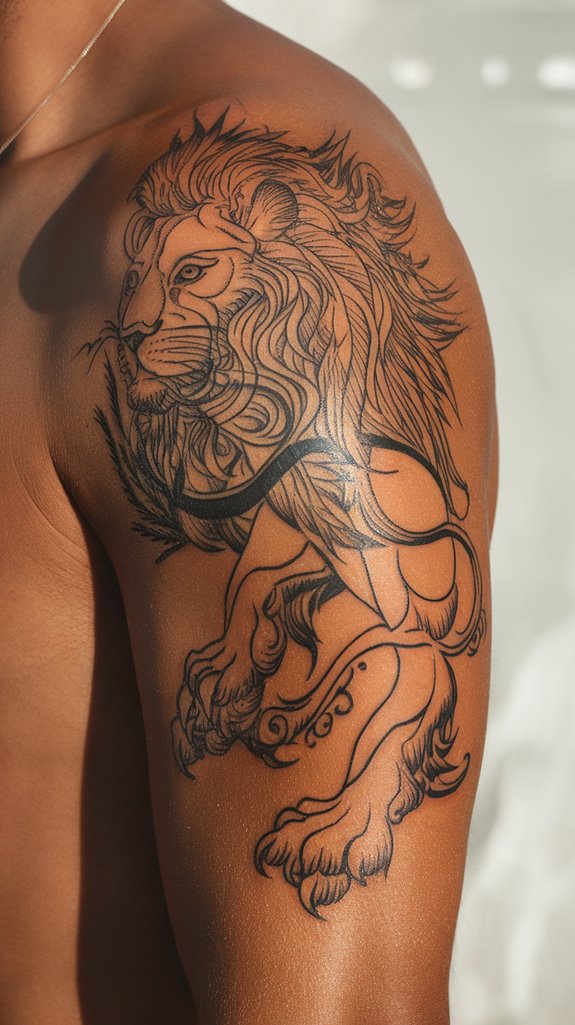
Persian mythology, drawn from epics like the Shahnameh, is filled with fantastical creatures that carry symbolic weight. The Simurgh, a majestic, benevolent bird said to be older than time, represents healing, wisdom, and the link between heaven and earth. With its wide wingspan, serpent-like feathers, and often peacock-inspired body, it makes for a dramatic and breathtaking tattoo often inked across the back, thigh, or chest.
The Persian Lion, often depicted with a sword and a rising sun, symbolizes bravery, nobility, and sovereignty. In both royal iconography and revolutionary symbolism, the lion is a central figure. As a tattoo, it can be stylized traditionally with regal detailing or modernized into a minimalist form. These mythological figures aren’t just decorative they embody virtues and narratives that can guide, inspire, and protect.
4. Floral Motifs: Lotus Flowers and More
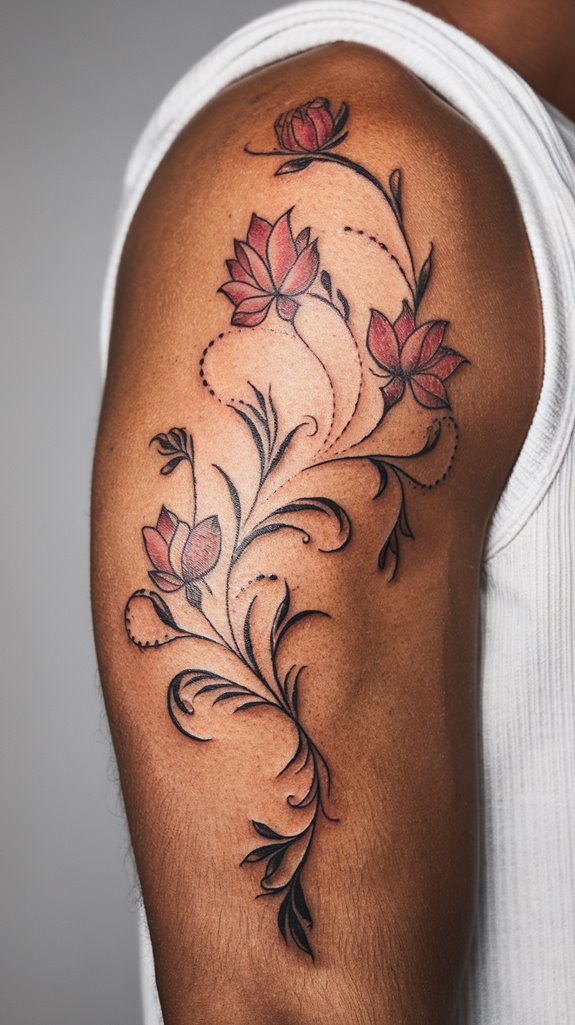
Persian art is synonymous with floral abundance. Gardens were considered a glimpse of paradise, and flowers like the lotus, rose, jasmine, and cypress tree frequently appear in Persian poetry and architecture. The lotus, symbolizing purity, rebirth, and beauty arising from difficulty, is a particularly meaningful choice for tattooing. Meanwhile, the rose represents divine love and spiritual longing a frequent metaphor in Sufi literature.
These floral motifs can be tattooed in delicate linework, subtle color, or even as ornamental borders framing other symbols. Wrapping around the ankle, blooming behind the ear, curling along the spine, or blooming from the shoulder, floral tattoos capture the romanticism, sensuality, and spirituality of Persian culture. They also allow for soft yet layered symbolism that evolves with the wearer’s life journey.
5. Miniature Paintings From the Shahnameh
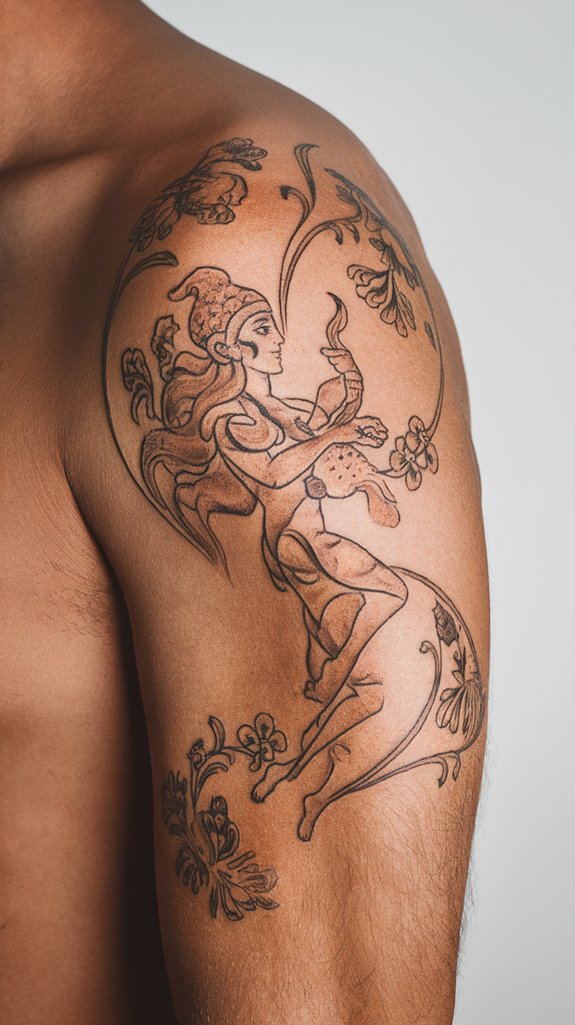
The Shahnameh, or “Book of Kings,” written by Ferdowsi, is a monumental Persian epic filled with vivid characters, battles, and philosophical themes. The accompanying miniature illustrations are masterworks of narrative art. Tattoos inspired by these miniatures can depict scenes such as Rostam and Sohrab, Zal and Simurgh, or Esfandiyar’s trials each one rich in story and symbolism.
Because miniatures are detailed and colorful, tattoo interpretations often adapt them through black line art, dotwork, or watercolor splashes. These tattoos appeal to literature lovers, mythology fans, and those who want a visually dense and historically meaningful design. Placement can range from large back pieces to smaller story panels along the arm or leg. Each scene carries emotional gravity, making it not just a tattoo but a tale told in ink.
6. Sun and Moon Imagery for Harmony
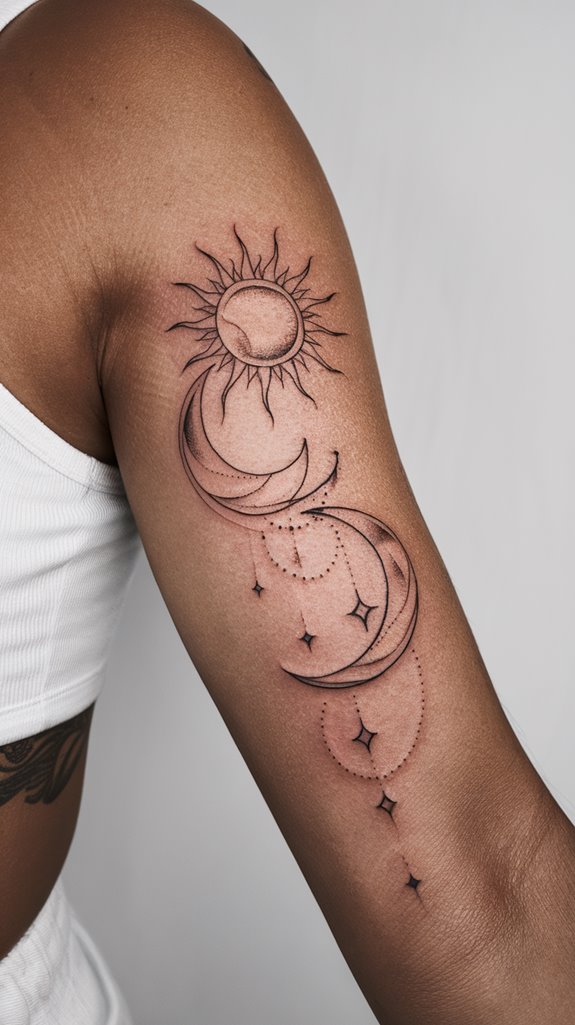
Persian cosmology and literature frequently explore dualities light and dark, love and loss, power and humility. Sun and moon tattoos reflect these themes and represent a harmonious balance of opposites. The sun often symbolizes the divine, enlightenment, or the beloved in romantic poetry, while the moon represents beauty, mystery, and introspection.
A sun and moon pair can be rendered in stylized Persian motifs, with ornate rays, crescent filigrees, or surrounding stars. They can be mirrored for symmetry or entwined into a circular yin-yang composition. When combined with Persian calligraphy or carpet elements, these tattoos speak to the soul’s search for balance and connection to cosmic rhythms. They are ideal for the wrist, shoulder blade, nape of the neck, or chest.
7. Combining Traditional and Modern Techniques
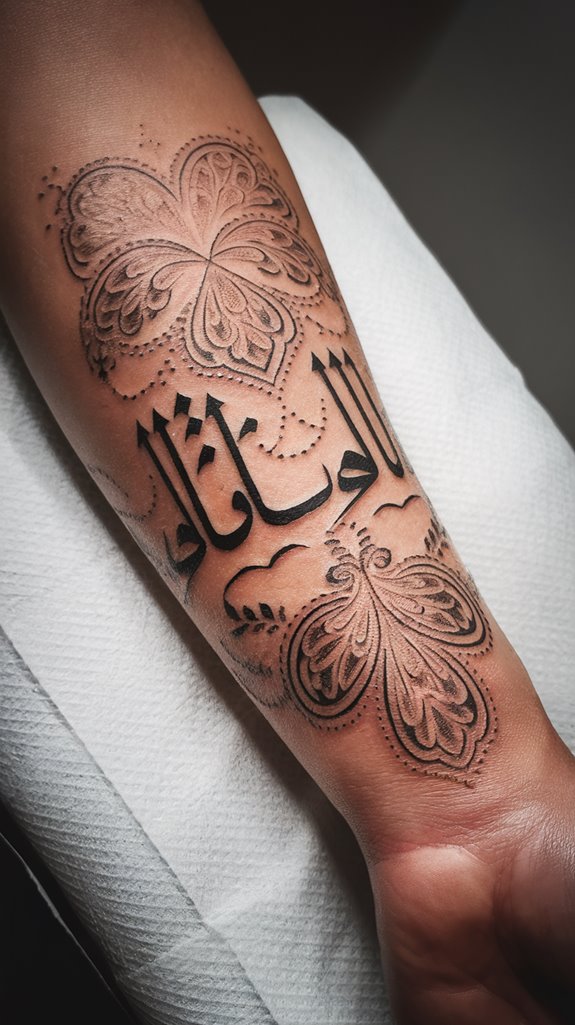
Modern tattoo styles can bring Persian motifs into fresh and unexpected contexts. For instance, a Persian quote could be combined with glitch art, geometric abstraction, or minimalist shading. A Simurgh could be imagined in hyper-stylized linework or negative space. Floral patterns could be interwoven with bold blackwork or digital sketch aesthetics.
This blend of old and new creates a layered visual identity that reflects both roots and evolution. It resonates especially with second-generation Iranians or anyone navigating a dual cultural identity. It’s also perfect for those who want their tattoo to be both respectful of tradition and boldly individual. These hybrid styles often become deeply personal statements about identity, displacement, reinvention, and pride.
Persian tattoos are more than just beautiful visuals they are living expressions of language, mythology, artistry, and emotion. Whether you choose a mythological creature, a line of poetry, or a symbolic pattern, each piece becomes a dialogue between the ancient and the personal. These tattoos serve as wearable tributes to Persian identity, craftsmanship, and depth.
As tattoo culture embraces global narratives, Persian designs stand out for their elegance, complexity, and spiritual resonance. From the poetic curves of a calligraphy verse to the mythic wings of a Simurgh, every detail tells a story. These tattoos aren’t trends they are testaments. They represent continuity, transformation, and a commitment to carry one’s cultural heart proudly, visibly, and artfully. When you wear that story on your skin, you carry a piece of timeless tradition into your everyday journey a quiet revolution of heritage, pride, and self-expression.




